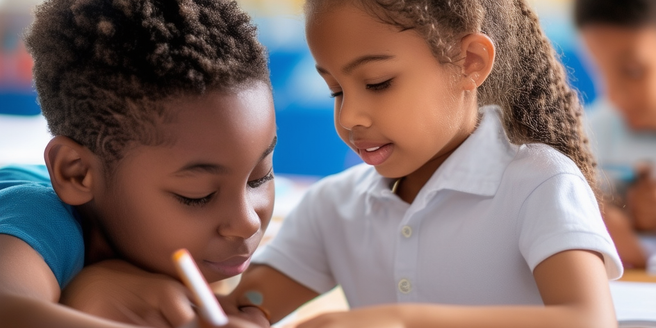
Understanding the Basics of Positive Behavior
Positive behavior consists of actions that are socially acceptable and beneficial to both the individual and society. These behaviors, grounded in ethics, respect, and understanding, contribute to societal norms and communal harmony, while promoting inclusive environments. They play a significant role in personal growth and societal progress, leading to increased self-esteem, respect for others, and a positive societal contribution. A child who learns and practices such behaviors develops into a respectful and socially bound individual, promoting communal harmony. Understanding these behaviors is invaluable in nurturing children’s emotional intelligence and social skills, allowing us to effectively foster positivity, promoting emotional and social growth. Encouraging positive behaviors in children is critical as motivation and rewards lead to the understanding and repetition of positive actions, establishing a foundation for them to become responsible and empathetic adults. In summary, positive behavior benefits both individuals and society, creating an environment that encourages growth and positive contributions, cultivating a community that respects one another.
The Importance of Encouraging Positive Behavior in Children
Promoting positive behavior in children during their early years is crucial for their overall growth as it fosters essential social and emotional skills. Not only does this benefit their individuality, mental health, self-confidence and life balance, it also improves their personal and societal interactions. Furthermore, this practice produces responsible and respectful adults whose influence encourages a positive societal change.
In summary, encouraging positive behavior in children is not just a parenting strategy but a mindful investment in their future. Teaching them positive actions aids in their personal success and in building a kinder, respects-driven society.
Techniques to Promote Positive Behavior
Promoting positive behavior involves several key techniques, among them is modeling appropriate behavior, setting an example for others to follow. Also effective is reinforcing good behavior via verbal praise or rewards, creating an association of positivity with that behavior. Additionally, setting clear, consistent expectations provides a framework for individuals to understand what is expected of them.
Effective communication is also critical in guiding others on acceptable behavior, thereby preventing misunderstandings. Assigning responsibilities can induce a sense of accountability, motivating them towards appropriate conduct. Setting attainable goals can serve as a boost to a child’s self-esteem when accomplished, making positive behavior more tangible.
Each of these techniques hold significant roles in fostering and encouraging positive behavior. Incorporating these methods is likely to develop more acceptable behavior, creating a better environment for everyone involved.
How to Reinforce Positive Behavior at Home
Promoting positive behavior in children can be greatly achieved at home through methods such as praise, rewards and privileges. Parents and guardians are encouraged to use these strategies consistently, creating a routine that children can understand to encourage good behavior. It’s also crucial to address negative behaviors constructively, helping children understand what they’ve done wrong, rather than resorting to punitive measures. Similarly, it’s essential to provide clear expectations and standards for behavior, promoting self-discipline and making the process of reinforcing positive behavior more effective.
Addressing Negative Behaviors in a Positive Manner
Negative behaviors, whether in children or adults, can be positively addressed by shifting our focus from punitive responses to teaching and understanding the impact of actions. Identifying the root cause of the behavior helps us navigate better and assist the individual in constructive behavior modification.
In these situations, emphasis should be placed on demonstrated empathy and patient understanding in order to alleviate tension and open up potential remediation paths. Patience generates a safe environment for individuals to express themselves and participate in finding a solution.
The process should guide the individual in discovering better behavioral alternatives, enabling them with tools for healthier decisions. Encouragement is key for them to reflect on their actions and explore possible consequences, making them see the benefit of positive behavior. By addressing the problem at the source through these methods, negative behaviors can be turned into opportunities for personal growth.
The Long Term Effects of Positive Behavior Reinforcement
Positive reinforcement shapes a child’s character creation and value system through praise and recognition of positive behaviors. This method helps children repeat such commendable behaviors and develops a robust, confident personality. Furthermore, it aids in the healthy development of self-esteem, instills social skills, such as cooperation and empathy, and nurtures an individual capable of responsible interaction with others. To sum up, positive reinforcement is a critical technique for comprehensive personal development, blending individual growth and socially acceptable conduct.
